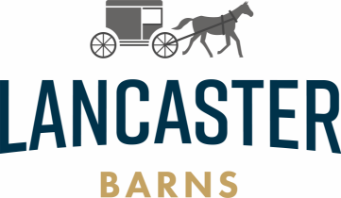Amish society has several distinctive features. It is small, informal, local, compact, and fairly homogeneous. From egos to organizational units, the Amish prefer small-scale things. They fear that bigness will lead to pride and the abuse of power. Small-scale life encourages informality and flexibility. The bureaucratic organizations and procedures of modern societies are completely missing in Amish life. Horse-and-buggy transportation and large families living close together encourage face-to-face interaction. Social networks overlap because the same persons are fused together by residence, kin, ethnicity, work, education, leisure, and worship-yielding a dense and compact social structure. Historically, Amish involvement in farming produced a homogeneous occupational structure, though that is changing with the rise of business.
The Amish church is organized congregationally. Commonly known as a district, an Amish congregation includes all the families living in the immediate geographic area. There are more than 1,400 congregations in North America. Some twenty to forty households comprise a district. Congregations do not use church buildings but gather for worship in the homes of their members. When a district grows too large to hold services in a home, it divides into two. The small size of the typical district facilitates a close-knit, intimate fellowship in which members come to know each other very well.
The church districts in a given geographic area comprise a settlement. As many as one hundred districts, or as few as one, may be found in a single settlement. Lancaster's Amish community ranks second only to Holmes and adjacent counties in Ohio, which host the largest settlement in North America. The Lancaster settlement has about 150 districts. Since 1970, various migrations out of Lancaster County have seeded nearly thirty new settlements in other parts of Pennsylvania as well as in Indiana, Kentucky, Missouri, New York, and Wisconsin. Nevertheless, over the years only a small proportion of families have left the Lancaster area.
Amish church districts that share similar religious practices consider themselves "in fellowship" with one another and constitute an affiliation. Districts in an affiliation usually permit their ministers to speak in one another's worship services. In Lancaster County, the Old Order Amish are the largest affiliation. The more progressive New Order Amish and the Beachy Amish are two small affiliations that have two and five congregations respectively.
Each Old Order congregation gathers for worship every other Sunday. A bishop, two ministers, and a deacon preside over the three-hour gathering and serve the church without pay or formal theological training. Leaders exert considerable influence. Bishops preach and teach as well as administer the rites of baptism, communion, marriage, discipline, and excommunication. They also are expected to model the virtues of an obedient Christian life to which the church calls all its members.
The practices, teachings, and taboos of the church are known as the Ordnung, a word without a simple English equivalent. The Ordnung defines the expected conduct of members. The "understandings" of the Ordnung include general principles, such as modesty and nonviolence, as well as specific applications, including prohibiting television and wearing prescribed styles of clothing. Generally unwritten and passed on by oral tradition, the Ordnung is a body of communal regulations that cultivate group identity, cohesion, and order. The Ordnung articulates the moral order of the community, and its practice defines the very essence of Amish identity:
Examples of practices prescribed by the Ordnung:
- the color and style of clothing men's hat styles
- the color and style of buggies horses or mules for fieldwork
- steel wheels on machinery
- the Pennsylvania German dialect worship services in homes
- unison singing without instruments
- the menu of the congregational meal
- marriage to church members
Examples of practices prohibited by the Ordnung:
- tractors for fieldwork
- ownership and operation of automobiles
- electricity from public power lines filing a lawsuit
- entering military service
- owning computers and televisions pipeline milking equipment
- high school education
- jewelry, wedding rings, and wrist watches
- divorce
Slowly changing over the years, the Ordnung is the social glue and guiding principle of the Amish community. Church leaders, especially bishops, play a major role in persuading members to follow the Ordnung in their daily lives. The general contours of the Ordnung-horse-and buggy travel, distinctive costume, the Pennsylvania German dialect, the taboos on electricity and high school-are followed in all church districts in the Lancaster settlement. Some other practices, however, vary from district to district-access to telephones, the size of businesses, the use of power lawnmowers, and the style of furnishing in homes. Ordained leaders in the Lancaster area confer twice a year, hoping to promote a common Ordnung as much as possible.
When baptized members overstep the boundaries of the Ordnung-by buying a car or wearing jewelry, for example-they encounter the discipline of the church. Excommunication faces all those who persist in flouting the guidance of the Ordnung. Excommunicated members who refuse to change their ways are shunned. Members may not eat or conduct business with former members who are under the ban of the church. Restoration is always possible for those who are willing to humble themselves and return to the church, but for the unrepentant, shunning continues until death.
Article from The book Amish Enterprise Pages 8-11: From Plows to Profits, by Donald B. Kraybill and Steven M. Nolt, the Johns Hopkins University Press 2004, second edition. Used by permission of the authors and the publisher. For more information contact the Hopkins Press Hopkins Press


